Note From FIRM Foundation:
Just an FYI for all those of you who follow us and attend our events. We are no longer affiliated with or employing Latter-day-Media (aka Mike and Nancy James, Latter-day-Network, Color My Media, Comefollowme2021, Hope to Heaven, Latterdaynetwork.tv, or Motivational Mentoring YouTube ), to film or manage our events or content. We have had a parting of ways . If anyone is contacted by them, pretending to represent us, know it isn’t true.
Firm Foundation, Book of Mormon Evidence, Legacy Research
 |
| Wayne May and his forefathers have lived in the same area of northern Wisconsin for five generations. He has spent more than 60 years of his life in the Heartland of America, traveling more than 1,000,000 miles, visiting more than 1,000 sites, and talking with hundreds of thousands of people in thousands of gatherings. He has edited and printed more than 100 issues of his Ancient American Magazine. No other American has more experience looking for the artifacts of the native people who lived and died in Ancient America. In a crystal clear stream in the northern woods of Manitowish, Wisconsin, Wayne found alloy castings of arrowheads. The metalworking and aerodynamic knowledge of the ancient people are clearly represented in these artifacts. Wayne found the arrowheads in the northern lands where natural copper is found and where the Nephites of the 4th Century gathered before their last stand at Cumorah. Last week Wayne received the results from a modern metals testing laboratory for one of the alloy arrowheads. We can now say with confidence much more about the level of knowledge that the ancient people had when they made this arrowhead. The results from these tests are attached. Donate to Wayne and Heartland Research tax free here: Zarahemla.site  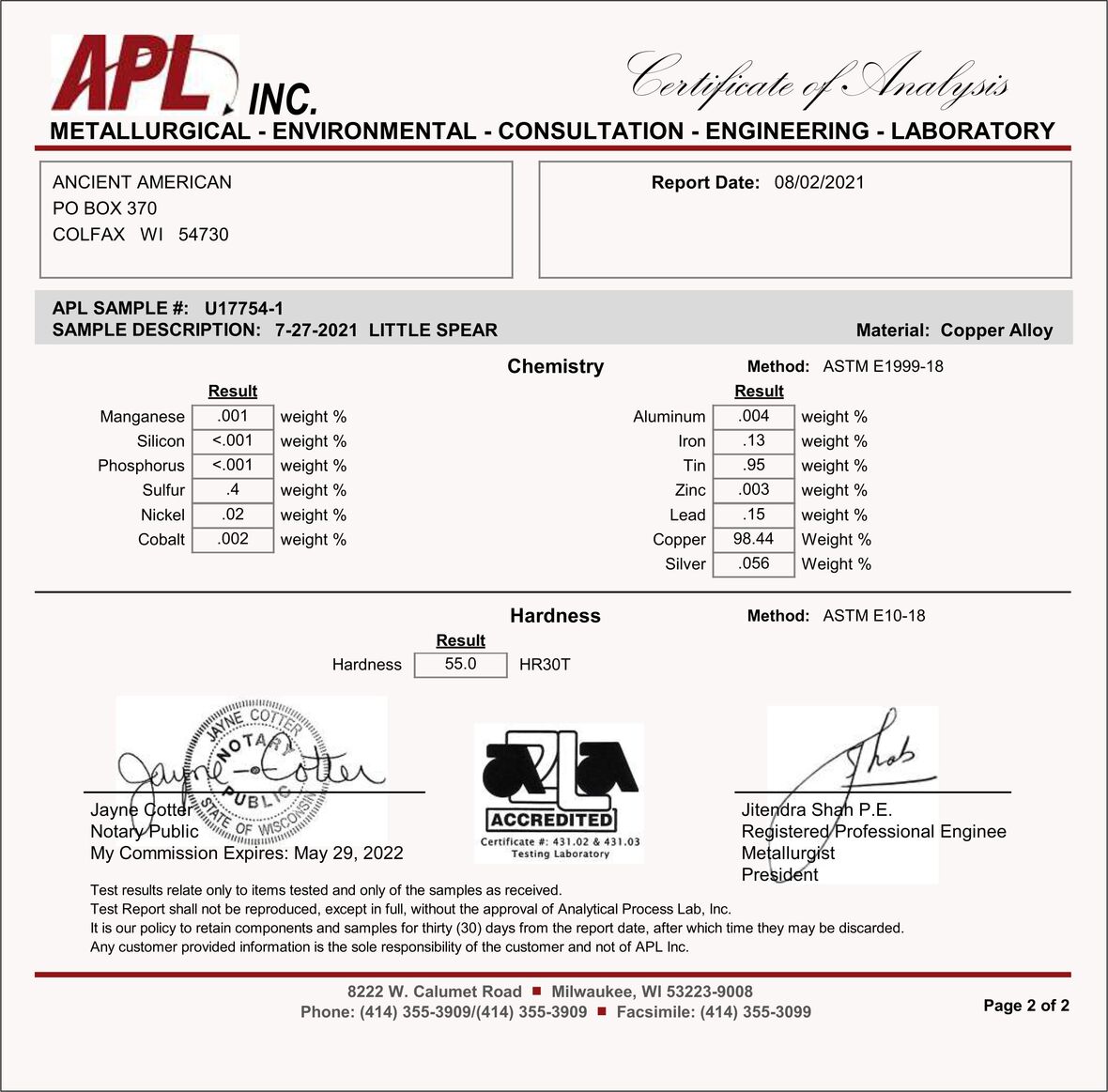 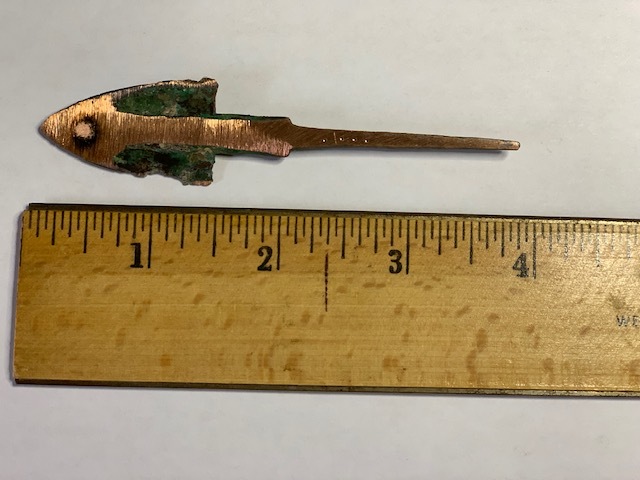 Backside of arrowhead – Burnt mark from spectral analysis and proof of alloy’s crystal structure from casting. 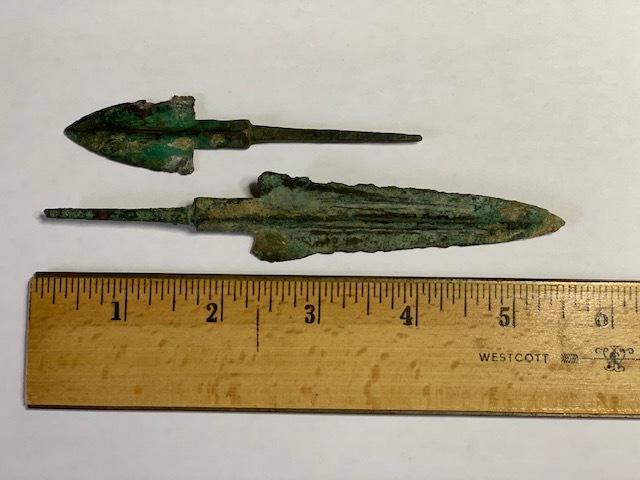 Arrow and spear points found in same clear waters of Manitowish, Wisconsin. Technical Features of Artifact Confirm High Level of Metalworking Knowledge 1. This artifact is ancient, and it is from northern Wisconsin. 2. The hardness of the metal alloy is twice as much as that of natural copper. The analysis shows that the metal’s hardness comes from the intentional addition of one pound of tin for every 100 pounds of copper. The tin content is only 1/10th as much as in the bronze alloys of Europe, Africa, and Asia. The low content of tin certainly reflects the fact that there are limited sources of tin ores in North America. Nevertheless, the tin was deliberately in the alloy, and as such, the hardness of the metal in the arrowhead doubled, and the alloy’s castability greatly improved. 3. There is clear evidence from the surface and internal crystal structure of the metal in the arrowhead is a casting. The technology of casting gave the metalworkers the benefits of large-scale production. The arrowhead indicates that the ancient people cast tens of thousands of pieces where each piece has exact aerodynamic properties and improved metal hardness. There was no way that the production of a handworked piece of copper would have been able to compete with the casting of many pieces from the copper alloy. The arrowhead is associated with a level of production that was intended for large armies. 4. The arrowhead weighs 12.5 grams. Engineers and scientists have determined that the aerodynamic drag of an arrow is of importance concerning the arrow’s drift in the wind and its down-range velocity. The design and shape of the arrowhead show an intelligent understanding of how airflow affects the targeting of arrows in battle. The ancient people achieved the benefits of their design of the metal point only after thousands of experiments where they would have balanced the bow’s power to the arrow’s aerodynamic flight. They designed the arrowhead for large armies seeking the shock effect of thousands of arrows in the air at the very moment when the heat of battle was its highest. The ancient metalworkers knew how to manage the heat of hot furnaces for the making and casting of arrowheads. The working of the alloy found confirms a high knowledge of metalworking in ancient time’s 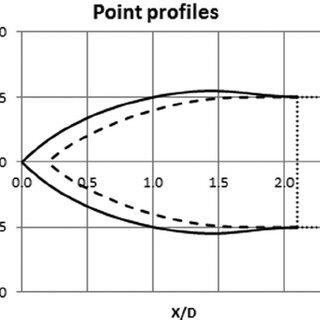 Aerodynamic design of arrowhead based on knowledge of airflows for arrow in motion. ©2021 Heart Land Research Group | 2681 Milan Street Easton, PA 180451. |
Nephite and Jaredite Copper
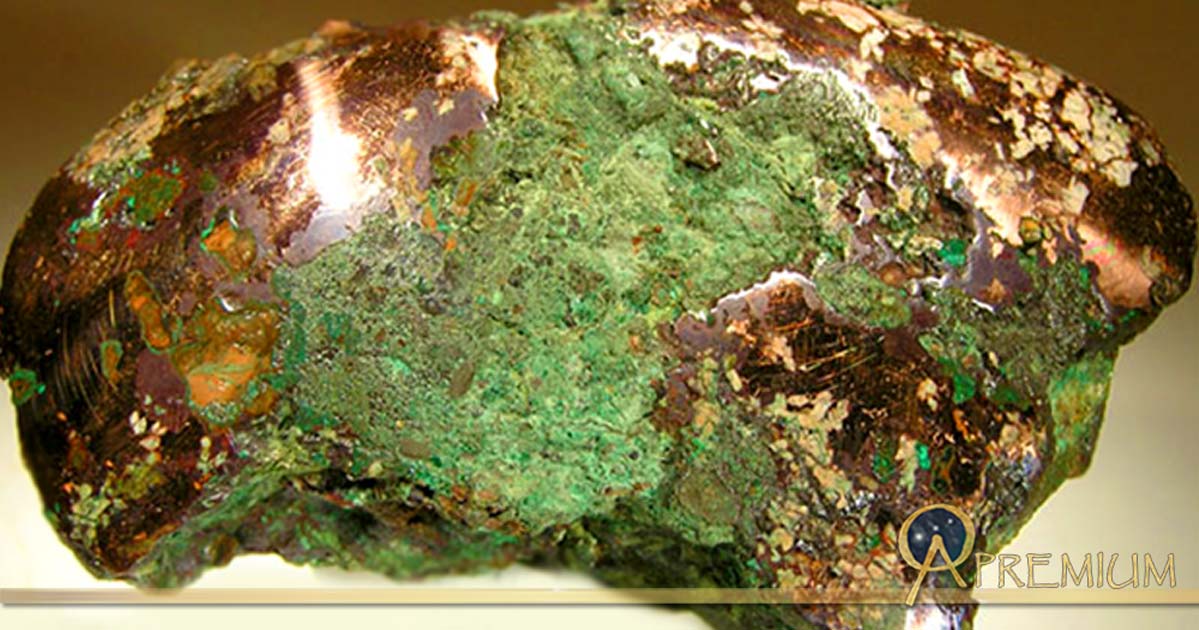
Nephite Ore in East Tennessee

“I did teach my people to build buildings, and to work in all manner of wood, and of iron, and of copper, and of brass, and of steel, and of gold, and of silver, and of precious ores, which were in great abundance.” 2 Nephi 5:15
Shortly after the Nephites separated themselves from the Lamanites (establishing the land of Nephi), Nephi states that he “did take the sword of Laban, and after the manner of it did make many swords, lest by any means the people who were now called Lamanites should come upon us and destroy us.”
Lehi after landing in Florida and prospering there, Nephi and his people fled from Laman and Lemuel. Most likely they traveled north up the Flint river of the Chattahoochee River. We know they traveled “many days”. Travel time by boat up the river to a place near Helen, Georgia would take 7-9 days which would qualify for “many days” as spoken in the Book of Mormon. Once reaching the head of the Chattahoochee River the Nephites could have easily taken the Hiawassee River at its head, north to the Tennessee River right into Chattanooga Tennessee. This is where I propose the City Nephi was located. See (Complete Route of the Nephites and Timeline Here)
The necessary ores for Nephites are found in abundance in East Tennessee in the area near Ducktown. The mine there has extracted over 15 million tons of copper ore in modern times. The French Huguenots enjoyed friendly relations with the Mountain Apalachee Indians, who were mining gold, copper and silver near their villages. The gold came from what is now Georgia; the silver from western North Carolina; and the copper from southeast Tennessee. To honor his friendship with these Native Americans, De Laudonniere named the region, “Les Montes Apalachiens.” Moroni’s America page 351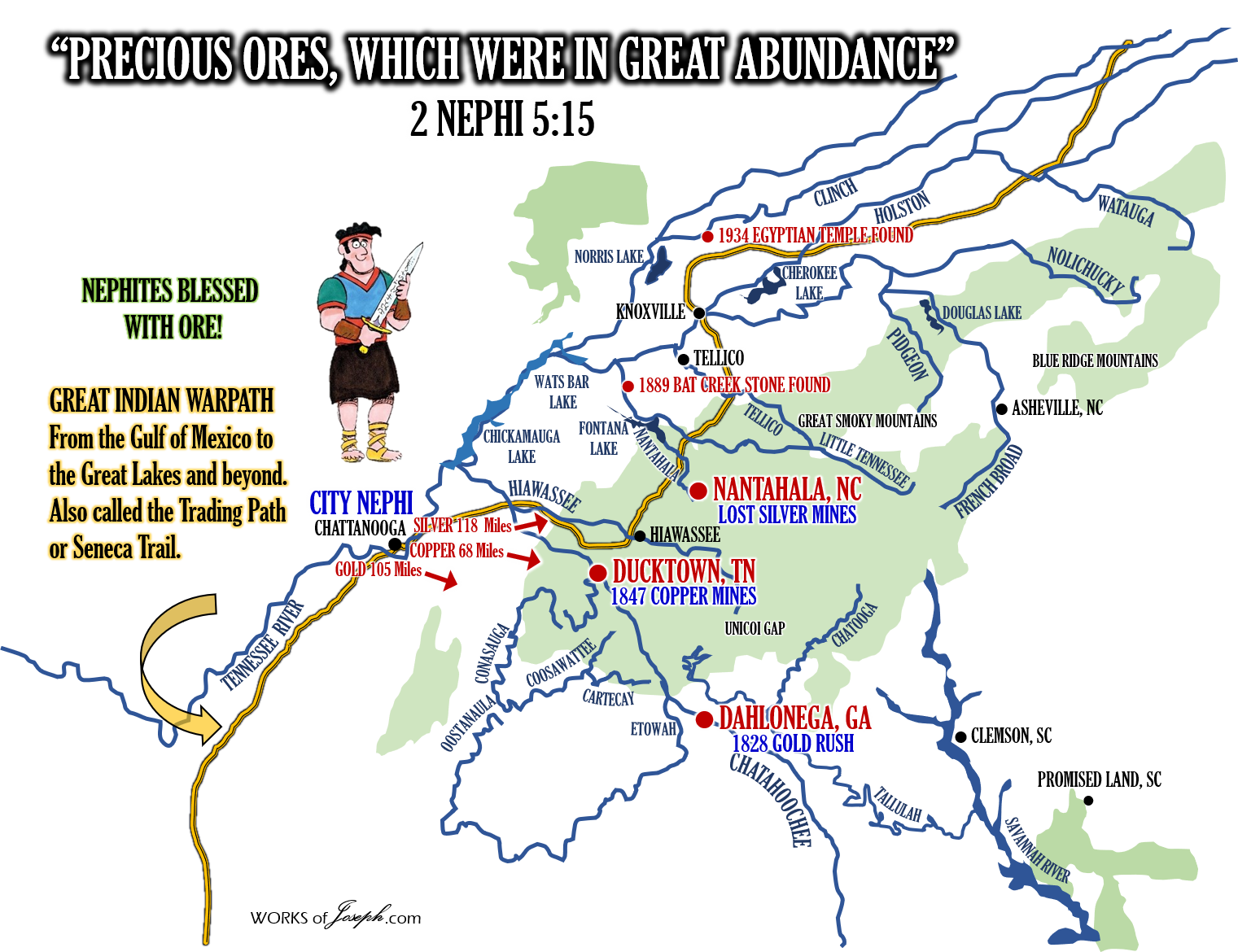 In 1799, gold was discovered in Cabarrus County, North Carolina, when Conrad Reed found a 17-pound “glittering stone” in Little Meadow Creek. In 1828 Dahlonega, GA was the site of the first major gold rush in the United States. Ducktown TN was the center of a major copper-mining district from 1847 until 1987. The district also produced iron, sulfur and zinc as by products.
In 1799, gold was discovered in Cabarrus County, North Carolina, when Conrad Reed found a 17-pound “glittering stone” in Little Meadow Creek. In 1828 Dahlonega, GA was the site of the first major gold rush in the United States. Ducktown TN was the center of a major copper-mining district from 1847 until 1987. The district also produced iron, sulfur and zinc as by products.

COPPER HISTORY LAKE SUPERIOR

Without Ancient American Magazine (AAM) by Wayne May, true science has no viable voice or outlet; it is excluded by academia cartel’s atheistic, anti-science-allegiance to “Manifestly Manipulated Destiny” – Columbus First.
BRONZE AGE IN AMERICA w. MINOANS & MYCENAEANS , by Colette Smith
(This is a MAJOR EDUCATION in not only Mediterranean history, but world history. NEVER did any level of public school or university EDU teach us accurate history of the origin & timing of the BRONZE AGE, its development and critical role in both oceanic trade & pre-Columbian American history, plus the historically-pertinent, global effects of its cataclysmic, volcanic end! WOW !! Human history is correlated with the ice ages like nowhere else
The author did a masterful job of presenting true history, its causes and effects. Thank you Colette, and thank you Ancient American Magazine.)
America’s history was influenced heavily by seafaring trade efforts all over ancient Europe. England started the “Bronze Age” (BA) about 4000 BCE by smelting local copper with tin or zinc into alloys called bronze and brass. A search was soon on for additional copper. Somehow, someone discovered the world’s richest and largest deposits of nearly pure copper on the northern shores Lake Superior in the new world’s “Great lakes” area. It is no pun to say that new world truly had “Superior Copper.” The European side of the story makes it appear that they did the mining and shipping, with their own imported settlements of thousands of miners.
(Note: An untold American story is that a population of immigrants (Jaredites) from Babylon had settled in the Great Lakes about the time of the Babylonian confusion of tongues and separation of continents, and were mining and trading this copper in the “new world,” virtually from their own back yard. That connection has not yet been made, historically, only that their burial artifacts contain that unique blend of copper ore. To what degree, if any, the Jaredites participated in or even controlled the copper mining and international shipping is not known.)
Meanwhile, many nations around the world were actively sailing the oceans seeking commercial trade. The ancients were master navigators, and understood both the ocean currents and the stars. English and Scandinavians sailed to Iceland and Greenland. Chinese, Indians, and Indonesians were sailing to America’s western coasts, while Minoans of Crete dominated the Mediterranean Sea zone. Arabians explored Africa’s east coast and trade routes to India and China. Wherever sailors landed, they impacted any local cultures with their own. For example, the ancient Far East Hindu influence in Meso-American culture is obvious.
Militant competition ruled the seas; they had the ships and the seamanship to enforce it. Soon Minoan shipping became a primary commercial force in the rich, “new world” copper trade, servicing all ports in Europe and the Mediterranean. The BA hit full stride in its 2000-year roll.
A Minoan competitor group from the Island of Knossos, near Cyprus – descendants from Japheth – muscled the Minoans into a subservient role in the giant Copper Trade, about 1500 BCE.
It is of prime importance to know that the earth’s climate was much warmer during the BA. There was no arctic ice. The Arctic Circle was open east to west across both segments of the recently-separated Pangea. Northern Scandinavia and Russia were not frozen. The Great Lakes were deeper and wider, rivers and water tables were all higher.
From this AA issue and others, we learn that primary shipping routes TO the Superior copper mines were via Hudson Bay, canoeing rivers south into Lake Superior, then OUT with fleets of small boat loads of ore, via either Lake Huron to the St Laurence, or Lake Michigan to Chicago River and the Mississippi. Small river boats of ore would then load onto ocean ships at Hudson Bay, St. Lawrence Seaway or New Orleans. New Orleans even had smelting sites to reduce the ore volume to pure, flat ingots. St Lawrence routes served N. Europe best, whereas New Orleans ships could service the Caribbean, or African routes to the Far East. By this vigorous trade over BA’s 2000-yr. life, Superior copper products have been identified all over the world.
But nature suddenly ended the BA about 1400 BCE. Minoan’s home base Island of Santorini exploded in the world’s most violent volcanic eruption ever known before or since. Minoa Island nearly disappeared, Crete, Cyprus and Knossus were wiped out in the first hour, along with catastrophic destruction throughout the Caribbean shorelines. A 75-ft Tsunami blasted all shores within 500 miles. Horrific air pollution shaded the earth’s sun for over a year, causing draughts, climate changes, diseases and starvation conditions for decades globally. Returning sailors sailed through Mediterranean debris to discover their home world had disappeared. Superior copper trade suddenly ended also, with workers walking away from their tools.
Surviving Phoenicians were quick to fill the gap in shipping trade to the Mediterranean, Atlantic and Far East. Their Phoenician “Golden Age “ lasted from 1400 – 580 BCE, followed by Carthaginians; Greeks 150 BC, and the Romans 65 BC. About 1100 AD began a cooling trend; by 1100 AD the Arctic circle began to freeze into an Ice Age.
None of this coordinated science data has been taught in America’s education system. True history from many places has been consciously suppressed or rewritten, and evidences hidden from view or publication by those in political and academic power, in order to promote their favorite myth of “Columbus First – Manifest Destiny,” In America, the Smithsonian Institute has earned its reputation as the “mother of harlots” in all science and history records.

 THE MINERS OF MICHIGAN COPPER 2450 B.C. -1200 B.C. ETHER 10:23
THE MINERS OF MICHIGAN COPPER 2450 B.C. -1200 B.C. ETHER 10:23
 “It is estimated that half a billion pounds of copper were mined in tens of thousands of pits on Isle Royale and the Keweenaw Peninsula of Michigan by ancient miners over a period of a thousand years. Carbon dating of wood timbers in the pits has dated the mining to start about 2450 BC and end abruptly at 1200 BC. Officially, no one knows where the Michigan copper went. All the ‘ancient copper culture’ tools that have been found could have been manufactured from just one of the large boulders…
“It is estimated that half a billion pounds of copper were mined in tens of thousands of pits on Isle Royale and the Keweenaw Peninsula of Michigan by ancient miners over a period of a thousand years. Carbon dating of wood timbers in the pits has dated the mining to start about 2450 BC and end abruptly at 1200 BC. Officially, no one knows where the Michigan copper went. All the ‘ancient copper culture’ tools that have been found could have been manufactured from just one of the large boulders…
“Indian legends tell the mining was done by fair-haired ‘marine men’. Along with wooden tools, and stone hammers, a walrus-skin bag has been found. A huge copper boulder was found in the bottom of a deep pit raised up on solid oak timbers, still preserved in the anaerobic conditions for more than 3,000 years It is thought that most of the miners retired to Aztalan and other locations to the south at the onset of the hard winters on Lake Superior. The mining appears to have ended overnight…

“In the old works on the ‘Minnesotah’ location near the forks of the Ontonagon River, there was found, at a depth of 18 feet, a mass of copper weighing 11,588 pounds which had been taken out of the vein by the ancients. It had been raised a few feet along the slope of the vein by means of wedges and cobwork made of logs… showing distinctly the marks of a narrow axe, 1 3/4 inches wide, and very sharp … Although the timber… was very soft and tender, by reason of its age, it had not rotted from exposure to the atmosphere, having been always covered by water.”Jay Stuart Wakefield, American biologist/writer, and Seinoud M. DeJonge Dutch physical chemist/mathematician

Ancient American LDS Special Edition IV: Earth, Wood, and Copper, Trademarks of the Promise Land. The Ancient America LDS Special Editions covers a wide variety of topics from Native American Traditions, Archeological evidence of the Book of Mormon in North America, and writings from Joseph Smith and the Book of Mormon leaving no doubt that America is the The Promise Land of the scriptures. Magazine format, illustrated, 39pp.
A Metal of Power and Prestige: The Ancient Copper Industry of North America
There are several criteria archaeologists look for in the quest to determine the level of cultural advancement of ancient peoples. Obviously, one of these criteria is technological advancement, considered by some to truly get underway with the introduction of metallurgy.
For some time it was believed that the people who exploited the massive copper supplies from the North American Great Lakes region were members of a single cultural entity, once referred to as the Old Copper Culture. A far more interesting picture has emerged in recent decades, as archaeologists have gradually realized that Great Lakes copper was at the center of an industry for thousands of years, utilized by many different cultures. Furthermore, various dating techniques are constantly pushing the fabrication of advanced copper tools further back into America’s ancient past.

Diorama of Anishinaabe people mining copper near Lake Superior (Ellenm1/ CC BY-SA 3.0 )
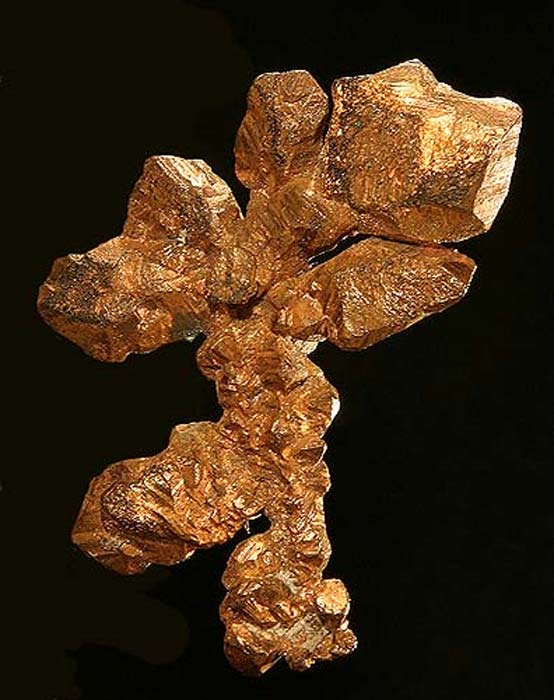
‘Evidence exists of copper trading routes throughout North America among native peoples, proven by isotopic analysis.’ Native copper from Ray mine, Arizona (Rob Lavinsky, iRocks.com/ CC BY-SA 3.0 )
Advanced Copper Tools
Accelerator Mass Spectrometry (AMS) allows for the dating of copper artifacts by showing the age of textiles or wooden fragments adhering to (and partially preserved by) the artifacts. This method has recently dated two copper conical points from Vilas County, Wisconsin to 5740 +/- 40 BC and 5355 +/- 60 BC. Copper points featuring toothed or notched bases for hafting attachments have been found in Wisconsin and elsewhere, usually termed “saw tooth” or “serrate tang” points, and can be seen in photographs from numerous collections. Recently, one such point featuring four teeth on one side and three on the other was found at the Sandy Lake Dam site in Aitkin County, Minnesota, with eight other copper tools and 24 pieces of scrap metal. Bone was used to date the contexts of this find to between 5,000 and 4,000 BC.
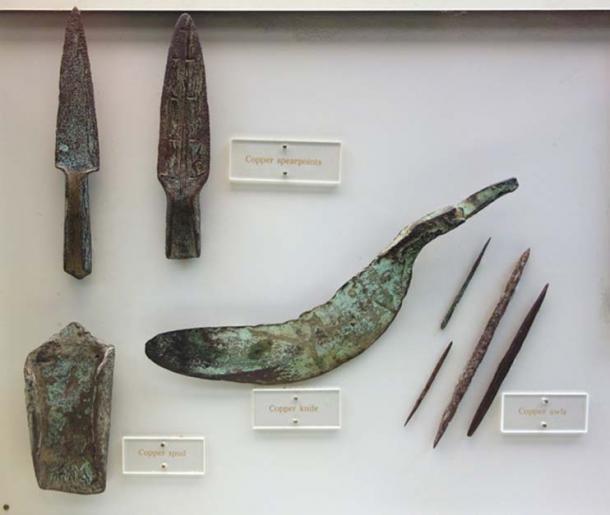
Copper knife, spear points, awls, and spade, from the Late Archaic period, Wisconsin, 3000 BC-1000 BC.
The early manufacture of advanced copper tools sets North America apart from most of the ancient world. Throughout most of the Old World, the rise of copper metallurgy almost universally occurs in the same pattern, with ancient groups beginning to work the metal in order to fabricate ornaments. This is true for finds from the eighth to seventh millennium BC, including a copper pendant from Shanidar cave in Iraq, copper beads from Cayonu Tepsi in Turkey, a rolled copper bead from Ali Kosh in Iran, and artifacts from Tell Halula in Syria. In Asia, the earliest metal artifacts are pins, bracelets, beads, pendants, and mirrors, dating to 5,000-4,000 BC. In Britain, the earliest metal objects were ornamental beads, as are the first copper objects from France, where they are found in collective burials dating to 3500-3000 BC in the Paris basin and Vignely. Heavy copper beads are known from Southern France and the west bank of the Rhone, and the earliest metal objects from the Languedoc consist of copper and lead beads of the third millennium BC Fontbouisse culture.
Copper: Function Before Fashion
The persistence of this pattern of ornamental metallic objects has led to the theory that metallurgy was universally born out of aesthetic desires, with weaponries and tools always arriving later in the cultural sequence. This persistent pattern, however, is broken in North America, where copper tools were contemporary with or earlier than the ornaments. Eventually it may be proven that advanced metal tools were made in North America earlier than anywhere else on earth.
Jason Jarrell and Sarah Farmer are investigative historians and avocational archaeologists. They study many subjects including depth psychology, Biblical mysteries, political science, and comparative mythology. They’re also authors of an upcoming book Ages of the Giants, detailing the cultures and giants of North America, set to be released in 2017. Learn more at their website: ParadigmCollision.com




